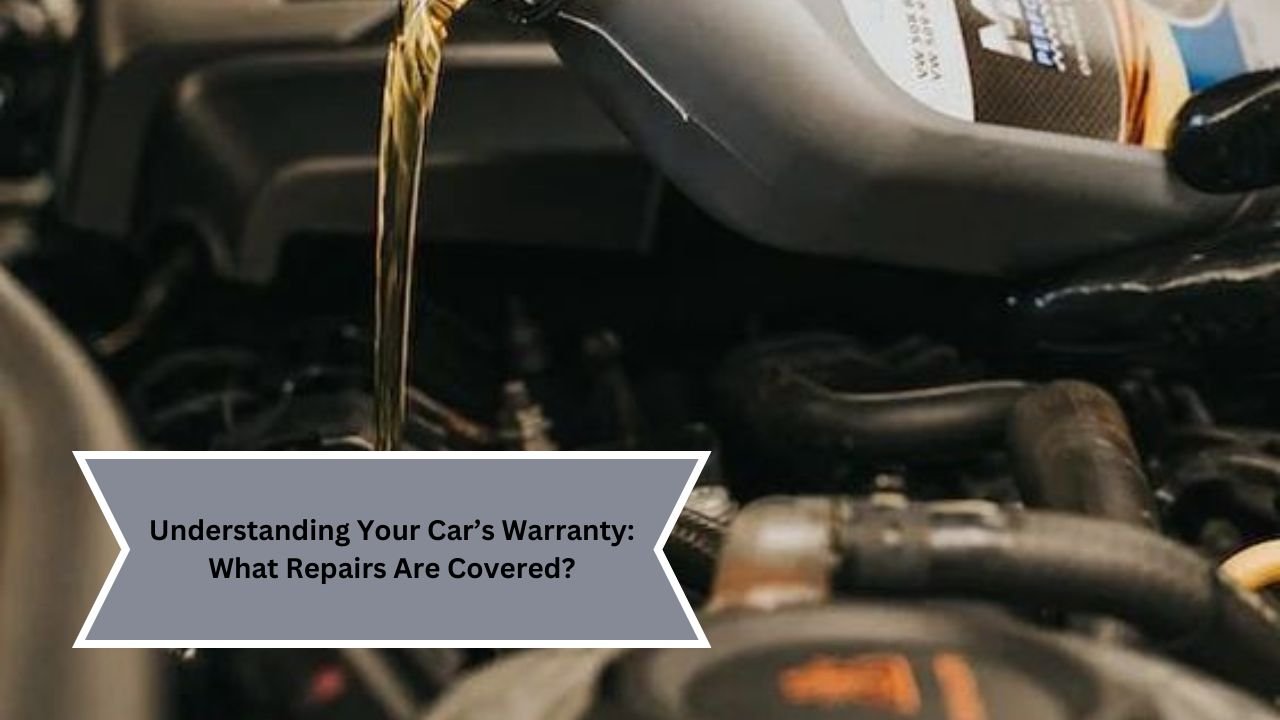When you purchase a vehicle, understanding the warranty is as important as the car itself. A car warranty can offer significant peace of mind, protecting you from unexpected repair costs. However, many car owners are unsure about the specifics of their warranties—what’s covered, what isn’t, and how to make the most of it. This guide will help you navigate the complexities of car warranties, focusing on the types of coverage available and the repairs that are typically included.
Types of Car Warranties
Before diving into what repairs are covered, it’s essential to understand the different types of car warranties you may encounter:
1. Manufacturer’s Warranty
Often referred to as a “new car warranty,” this warranty is provided by the vehicle manufacturer and is usually included with the purchase of a new car. It generally covers defects in materials and workmanship and is divided into two main components:
- Bumper-to-Bumper Warranty: This comprehensive coverage typically lasts for three years or 36,000 miles, though it can vary by manufacturer. It covers most components of the vehicle, excluding wear-and-tear items like tires and brake pads.
- Powertrain Warranty: This warranty covers the vehicle’s essential components that deliver power to the wheels, such as the engine, transmission, and drivetrain. It often lasts longer than the bumper-to-bumper warranty, commonly extending to five years or 60,000 miles.
2. Extended Warranty
Also known as a vehicle service contract, an extended warranty can be purchased separately and kicks in after the manufacturer’s warranty expires. Coverage can be comprehensive or limited, depending on the plan chosen. This type of warranty is particularly valuable for owners who keep their vehicles for a long time or drive extensively.
3. Certified Pre-Owned Warranty
If you purchase a certified pre-owned (CPO) vehicle, it may come with its own warranty. This is typically an extension of the manufacturer’s warranty or a separate warranty provided by the dealer. CPO warranties often cover similar components as new car warranties, but specific terms and duration will vary.
4. Powertrain Warranty
Similar to the manufacturer’s powertrain warranty, some vehicles come with specific powertrain warranties that focus solely on the engine, transmission, and drivetrain. These are often offered for longer durations and can be particularly beneficial for used vehicles.
What Repairs Are Typically Covered?
Understanding what repairs are covered under your warranty is crucial for avoiding unexpected expenses. Here’s a breakdown of the common repairs included in most car warranties:
1. Engine Repairs
Engine issues are among the most significant concerns for vehicle owners. Most warranties cover a wide range of engine-related problems, including:
- Internal engine components like pistons, valves, and timing belts.
- Issues arising from manufacturing defects or faulty parts.
2. Transmission Repairs
Transmission problems can be costly to fix. Typically, warranties will cover:
- Issues with automatic or manual transmission systems, including the transmission itself, gears, and fluid leaks.
3. Drivetrain Repairs
The drivetrain is crucial for power delivery, and warranties generally cover:
- Components like axles, driveshafts, and differentials, provided that the issues are due to defects in material or workmanship.
4. Electrical System Repairs
Modern vehicles rely heavily on complex electrical systems. Coverage often includes:
- Battery replacements (for a specified time).
- Problems with the alternator, starter, and wiring harnesses.
- Issues related to sensors and control modules.
5. Suspension Repairs
The suspension system is vital for vehicle handling and comfort. Most warranties cover:
- Shock absorbers, struts, and springs.
- Steering components, including the power steering pump and rack.
6. Brake System Repairs
While warranties typically do not cover routine brake maintenance like pad replacements, they do often cover:
- Brake system failures due to manufacturing defects.
- Problems with the brake lines, master cylinder, and anti-lock braking system (ABS).
7. Heating and Air Conditioning
Warranties generally include coverage for:
- Heating and air conditioning systems, including compressors and evaporators, if the issues are due to defects.
8. Fuel System Repairs
Most warranties cover components of the fuel system, such as:
- Fuel pumps, injectors, and fuel tanks, as long as the problems are not a result of contamination or misuse.
What Repairs Are Typically Not Covered?
While warranties provide extensive coverage, there are certain repairs and conditions usually excluded:
1. Routine Maintenance
Basic maintenance tasks such as oil changes, tire rotations, and fluid replacements are generally the owner’s responsibility and are not covered by any warranty.
2. Wear-and-Tear Items
Items that naturally wear down over time are typically not covered, including:
- Brake pads, tires, and windshield wipers.
- Bulbs and fuses.
3. Negligence or Misuse
If a vehicle is not maintained properly or is used inappropriately (e.g., racing or off-roading when not intended), the warranty may become void.
4. Cosmetic Damage
Warranties do not cover cosmetic issues like paint scratches, dents, or interior wear. These are considered normal wear and tear.
5. Aftermarket Modifications
Installing aftermarket parts can void your warranty. It’s essential to check with your dealer before making any modifications to ensure your coverage remains intact.
How to Make a Claim
If you experience a problem covered by your warranty, follow these steps:
- Review Your Warranty: Before taking any action, read your warranty documentation to understand your coverage.
- Contact the Dealer: Reach out to your dealership or the warranty provider. They can guide you through the claims process.
- Gather Documentation: Have your vehicle’s service records and warranty paperwork ready to provide evidence of maintenance and coverage.
- Schedule an Inspection: Most warranties require a professional inspection to determine if the issue is covered.
- Approval and Repair: If the claim is approved, repairs will be made according to the warranty terms.
Conclusion
Understanding your car’s warranty is essential for making informed decisions about vehicle maintenance and repairs. Knowing what repairs are covered and excluded can save you from unexpected expenses and ensure you maximize your warranty benefits. By staying informed and maintaining your vehicle properly, you can enjoy peace of mind and confidence in your investment. Whether you have a new car, a certified pre-owned vehicle, or an extended warranty, being proactive about your coverage will keep you on the road with fewer worries.

